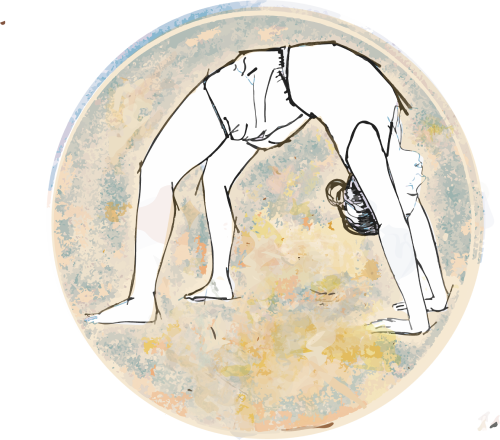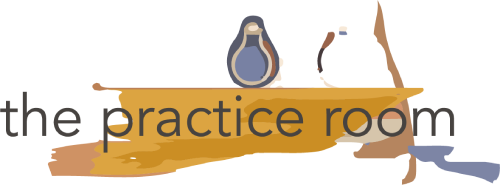Bellur Krishnamachar Sundararaja Iyengar was born on 14 December, 1918 in the village of Bellur in the Kolar district of Karnataka.
“I was the eleventh child of thirteen. At the time of my birth, India was devastated by a major world epidemic of influenza. My mother was in the grip of the disease when she was pregnant with me, and as a result, I was born very sickly. My arms were thin, my legs were spindly, and my stomach protruded in an ungainly manner. So frail was I, in fact, that I was not expected to survive. My head used to hang down, and I had to lift it with great effort. My head was disproportionately large to the rest of my body, and my brothers and sisters often teased me. As a boy, I suffered form numerous ailments, including frequent bouts of malaria, typhoid and tuberculosis. My poor health was matched, as it often is when one is sick, by my poor mood. A deep melancholy often overtook me, and at times I asked myself whether life was worth the trouble of living.”
Shortly before Mr. Iyengar’s 9th birthday, his father passed away.
“At the time a great vacuum was left in my family, and there was no strong guiding hand to help me through my sickness and my schooling. As often as not, I missed school through illness, and I fell behind in my studies.
My sister was given in marriage to a distant relative of ours, Shriman T Krishnamacharya. He was a venerable and revered scholar of philosophy, Sanskrit and Yoga. The Maharaja of Mysore invited my brother-in-law to teach in his Sanskrit College, and later, to set us a school of yoga, at the magnificent Jaganmohan Palace. In 1934, when I was some 14 years old, my brother-in-law asked me to spend some time with his wife (my sister) while he was away. On his return, when I asked to be allowed to go back, he proposed instead that I should stay in Mysore working on yoga to improve my health. Seeing the general state of my health, my brother-in-law recommended a stiff regime of yoga practice to knock me into shape and strengthen me. If my brother-in-law also had any eye to my deeper spiritual or personal development, he did not say so at the time.
This was to be a major turning point in my life – the moment when destiny came to meet me, and I had the opportunity to embrace it or turn away. So it was that my brother in law, Shriman Krishnamacharya, became my revered teacher and Guru and took the place of my mother and late father as my effective guardian.”
Shriman Krishnamacharya was a strict teacher who made life of the young aspirant rather difficult.
“When I began yoga, there was, I am sorry to say, no wise, kind teacher to lead me. My own Guru refused to answer any of my innocent enquiries into yoga. He did not instruct me as I do my students. He would simply demand a posture and leave it to me or his other students to figure out how it could be realised.”
In 1937, when he was 18 years old, Mr. Iyengar was sent to Pune by T. Krishnamacharya to conduct classes at the Pune Gymkhana Club.
“I did not possess the language, or have the community, family, friends or even safe employment. At the time all I had was my practice of asana – not even the breathing practices of prprānayāma, not texts, not yoga philosophy.
I embarked on the practice of āsana as a man might set off to sail the world in a craft he could barely handle. Clinging to it for dear life and finding only solace from the stars. Although I knew that others had sailed the world before me, I did not have their maps. It was a voyage of discovery. I wanted to precisely chart every coastline, measure the depth of every sea, happen on beautiful unknown islands, and record each perilous hidden reef or tidal current that threatens our navigation of the ocean of life.”
A period of abject poverty and starvation followed the end of that first assignment. But Mr. Iyengar stayed on in Pune, teaching students privately and in small groups.
In 1943, Mr. Iyengar married Ramamani and set up home in Pune with borrowed utensils. Ramamani was one of Mr. Iyengar’s early students and an able assistant.
“At one time, I was asked to become a Sannyasin and renounce the world, but I declined. I wanted to live as an ordinary householder with all the trials and tribulations of life and take my yoga practice to average people who share with me the common life of work, marriage, and children. I was blessed with all three, including a long and joyous marriage to my beloved late wife, Ramamani, children and grandchildren. What would I have achieved in my life without the love, support and companionship of Ramamani? Probably not much.”
One night in 1946, Mr. Iyengar and Ramamani had similar dreams of divinity, foretelling a brighter future. Shortly thereafter, his students started increasing.
In 1952, Yehudi Menuhin, famous violinist, wad directed to meet Mr. Iyengar to relieve pains and stress from playing the violin and performing. Menuhin later stated that Mr. Iyengar was his best violin teacher. Mr. Iyengar took up Menuhin’s invitation to travel to Europe in 1954. This would be the first of his many international tours as his fame grew.
In 1966, Light on Yoga was published, and hailed as an instant classic.
In 1973, three days after laying the foundation stone for a Yoga Institute, Ramamani passed away. In 1975, the Ramamani Iyengar Memorial Yoga Institute (RIMYI) was inaugurated. Today, RIMYI is a vibrant place of learning and research, buzzing with local as well as international students.
Mr. Iyengar’s extensive demonstrations and teachings planted the seeds for the phenomenal flowering of yoga in the West. Well into his 95th year, he continued to teach around the world. His groundbreaking journeys to Russia, where he taught in 2009, and to China, where he taught in 2011, sparked the burgeoning interest in yoga in those countries.
Called the “Michelangelo of Yoga” and the “King of Yogis,” Mr. Iyengar was included in Time magazine’s global list of the World’s 100 Most Influential People. In 2014, he was awarded the Padma Vibhushan, the second highest civil award in India.
Mr. Iyengar pioneered countless new ideas during his eight decades of teaching; but perhaps the most revolutionary is this: yoga is for everyone.
Over the last decade of his life, Mr. Iyengar led a transformation of his ancestral village Bellur, building a free hospital, water treatment facilities, India’s first temple dedicated to Patanjali, and a free school which supplies uniforms, books, and a hot lunch, not just to the children of Bellur, but to those of surrounding villages. In addition to the primary school, he also established a secondary school and a tertiary college.
On 19 August, 2014, Mr. Iyengar passed away.
B.K.S. Iyengar, universally acknowledged as the last of the great Hatha Yoga teachers, remained its most knowledgable and respected practitioner till the very end. Injuries from being self-taught, road accidents that almost killed him and set him back in his practice, heart attacks, none of these dampened his immense enthusiasm to practice, learn and teach.
Mr. Iyengar gave teaching instructions till a few days before his death and practiced till the last hours of his life.
“We are wrong to think that we are dull and inert. If your fire were extinguished, you would not be alive. Yogic fire exists in a latent or pristine state in everyone. But if I let cool ashes cover my fire through carelessness, arrogance or laxity of practice, the fire will lose its transforming heat. I have not retired and never shall. I will always keep the inner fire burning. I will never stop learning. And I have tried to share some of these lessons with you.”
More on Mr. Iyengar:
Extended biography of Mr. B.K.S. Iyengar on Kofi Busia’a website
More in the Resources section here
In order to ensure that these most basic concepts are not coloured by our interpretation, the text in this section is largely derived from publications written by Mr. B.K.S. Iyengar, or put out by RIMYI/ other Iyengar Yoga Associations around the world. All copyrights on content are held by the original sources.
References for the content in this section:
The Life of Yogacarya Sri B.K.S. Iyangar – B.K.S. Iyengar interviewed by Lois Steinberg in Yogadhara, 2000, published by the Light on Yoga Research Trust
Introduction: Freedom Awaits, Light on Life, 2005, B.K.S. Iyengar, Rodale International Ltd.
Living in Freedom, Chapter 7, Light on Life, 2005, B.K.S. Iyengar, Rodale International Ltd.
Light on Yoga, 1966, B.K.S. Iyengar
The Definition of Yoga, Light on Astanga Yoga, 2008, B.K.S. Iyengar, Alchemy Press
Guruji – An exhibition displayed by the students of RIMYI, Pune as part of Guruji’s 90th birthday celebrations held in Pune.
Life Sketch of Yogacharya B.K.S. Iyengar, by Richard Jonas; https://iynaus.org/sites/iynaus_files/stories/BKS-Iyengar-Life-Sketch.pdf


